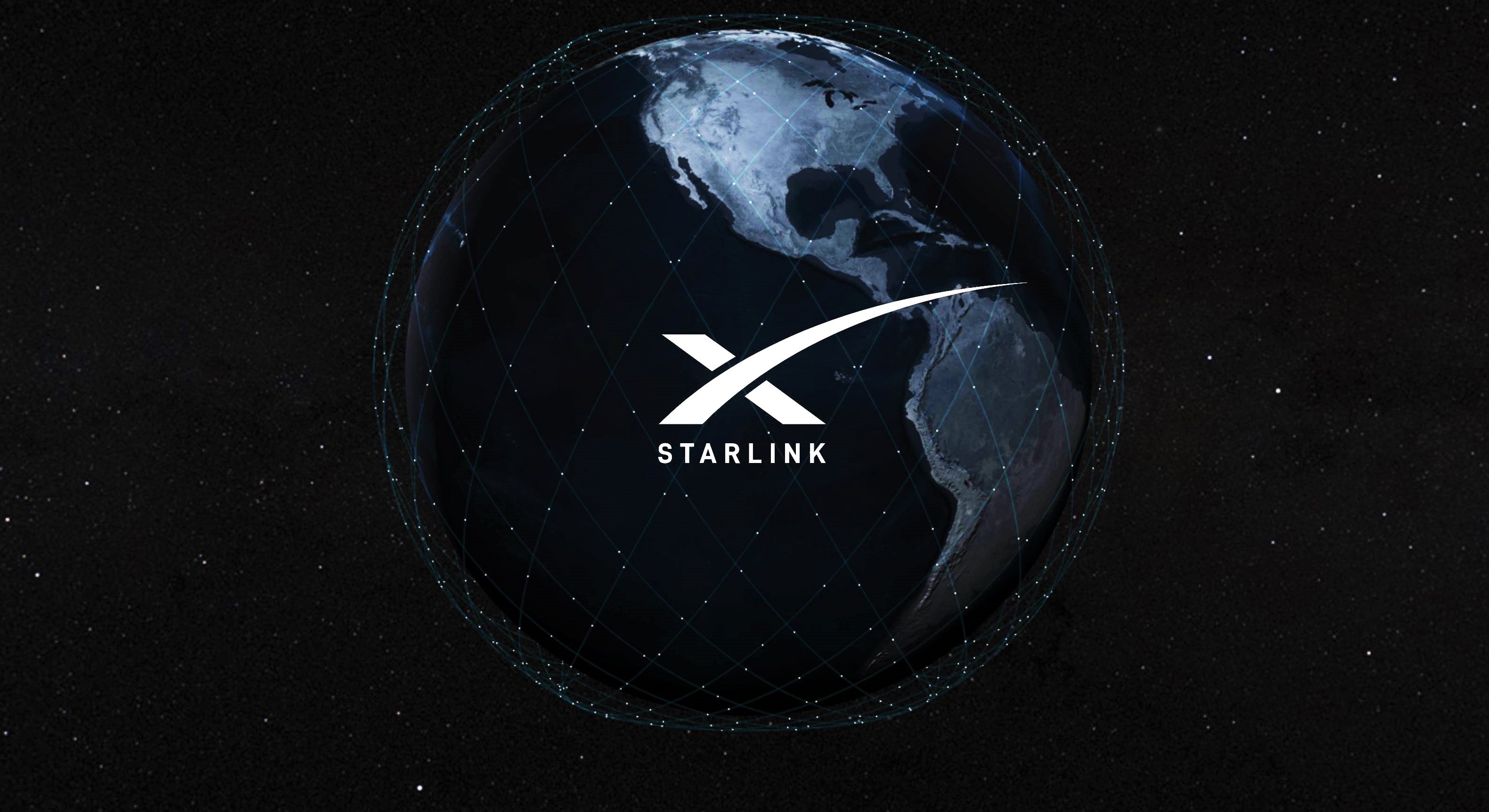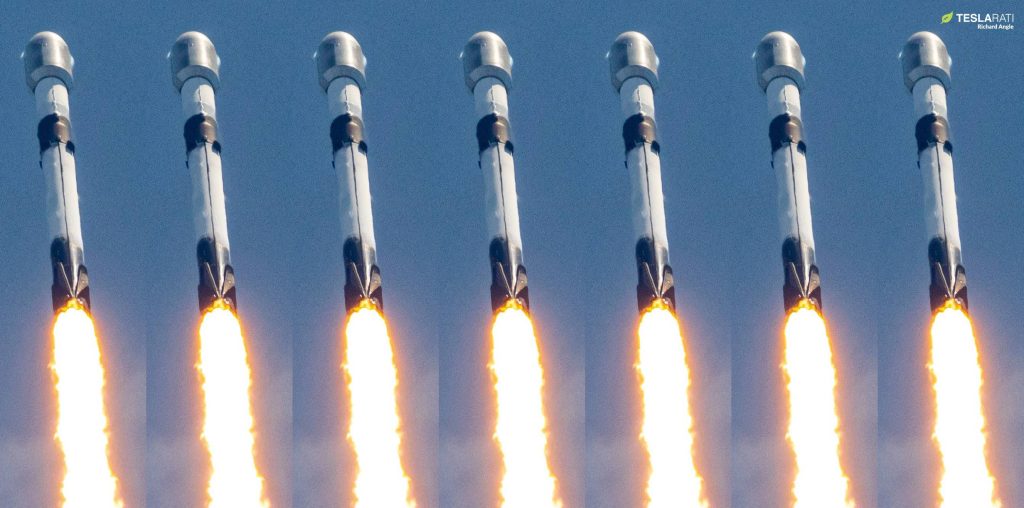

News
SpaceX COO says Starlink had cash-flow-positive quarter in 2022
President and COO Gwynne Shotwell says that SpaceX’s Starlink satellite internet program had a “cash flow positive quarter” in 2022 and “will make money” in 2023.
The update is major news for a program that SpaceX CEO Elon Musk has stated should be considered a success if it merely avoids bankruptcy. Several companies have attempted to build businesses around the concept of a low Earth orbit (LEO) internet satellite constellation. All have failed or gone bankrupt. Motorola pursued a concept called Celestris in the 1990s but eventually gave up and invested in Teledesic. Teledesic eventually went bankrupt and shut down in 2003 after spending the equivalent of $1.85 billion in 2022 dollars. In 2020, OneWeb – the closest to a true Starlink competitor – filed for bankruptcy despite having raised $3.4 billion and begun launching satellites. It was only saved by a $1 billion bailout led by the British government.
Despite pursuing the largest and most ambitious LEO constellations ever proposed, only SpaceX’s Starlink program has managed to avoid bankruptcy. SpaceX began developing Starlink in earnest in the mid-2010s and launched its first satellite prototypes in March 2018 and May 2019. Operational launches followed in November 2019, and SpaceX has since launched an unprecedented ~3540 working satellites on 70 Falcon 9 rockets. More importantly, just two years after opening orders, SpaceX has secured more than a million Starlink internet subscribers.
Adding to its impressive list of achievements, Gwynne Shotwell – a SpaceX executive known for being an excellent manager and voice of reason – says that Starlink has already had its first cash-flow-positive quarter.
The update that's rolling out to the fleet makes full use of the front and rear steering travel to minimize turning circle. In this case a reduction of 1.6 feet just over the air— Wes (@wmorrill3) April 16, 2024
According to Shotwell, that milestone happened sometime in 2022. Thanks to a productive 2021 and the accelerated launch of new Starlink satellites in 2022, continuously expanding network capacity, SpaceX’s subscriber count more than quadrupled between March and December. If Starlink truly did have a cash-flow-positive quarter last year, it likely happened in Q4. However, the nature of cash flow and the ambiguity in Shotwell’s statement are worth some amount of skepticism.
Crucially, cash flow should account for fundraising, which SpaceX does a lot of. In 2022, it closed a $1.7B venture round in May and a $250M private equity round in July, offering opportunities to negate otherwise negative cash flow in Q2 and Q3. If Shotwell means that Starlink had a positive cash flow quarter without accounting for fundraising, the achievement would be highly impressive and indicate that Starlink’s financial health is surprisingly good.
It’s also ambiguous if Shotwell meant that Starlink had a cash-flow-positive quarter in 2022 or if she was referring to the company as a whole. Earlier in her panel at the FAA’s annual Commercial Space Transportation Conference, Shotwell noted that SpaceX’s main product – Falcon rocket and Dragon spacecraft operations – “makes money.” She also said that “the cash flow from those operations basically pay for [Starlink and Starship] development.” External funds are then raised to supplement SpaceX’s profits from Falcon and Dragon.

The ambiguity leaves room for Shotwell’s statement to be interpreted a bit less positively. If SpaceX or Starlink’s cash-flow-positive quarter was contingent upon raising almost $2 billion in one calendar year, Starlink would arguably still be in a financially precarious position. A positive quarter in that context would be more indicative of decent accounting than good financial health.
However, Shotwell’s confident statement that “Starlink will make money” in 2023 was much less ambiguous and suggests that a positive interpretation of her “positive cash flow” comment could be more accurate. For Starlink to “make money” in 2023, the implication is that SpaceX expects annual revenue to exceed expenses – and possibly exceed expenses and external funding inputs.
Either outcome would be excellent. As long as Starlink’s revenue matches or exceeds expenses, the constellation could likely survive even if SpaceX’s access to external capital was partially or fully disrupted. It also bodes well for Starlink’s profit potential. If the Starlink Gen1 constellation is almost sustainable or profitable, the pending introduction of SpaceX’s next-gen Starship rocket and upgraded Gen2/V2.0 satellites could turn Starlink into a money printer.
In November 2021, CEO Elon Musk outright stated that SpaceX faced a “genuine risk of bankruptcy” if it couldn’t start launching Starship and Starlink V2.0 satellites “once every two weeks” by the end of 2022. Fifteen months later, Starship’s first launch is tracking towards March 2023, and there’s a nonzero chance the rocket won’t launch a single Starlink V2.0 satellite this year. Despite falling miles short of Musk’s target, Starlink is instead on the verge of becoming a sustainable business in the mind of SpaceX’s less hyperbolic leader.
News
Tesla China breaks 8-month slump by selling 71,599 vehicles wholesale in June
Tesla China’s June numbers were released by the China Passenger Car Association (CPCA) on Tuesday.

Tesla China was able to sell 71,599 vehicles wholesale in June 2025, reversing eight consecutive months of year-over-year declines. The figure marks a 0.83% increase from the 71,599 vehicles sold wholesale in June 2024 and a 16.1% jump compared to the 61,662 vehicles sold wholesale in May.
Tesla China’s June numbers were released by the China Passenger Car Association (CPCA) on Tuesday.
Tesla China’s June results in focus
Tesla produces both the Model 3 and Model Y at its Shanghai Gigafactory, which serves as the company’s primary vehicle export hub. Earlier this year, Tesla initiated a changeover for its best-selling vehicle, the Model Y, resulting in a drop in vehicle sales during the first and second quarters.
Tesla’s second-quarter China sales totaled 191,720 units including exports. While these numbers represent a 6.8% year-over-year decline for Tesla China, Q2 did show sequential improvement, rising about 11% from Q1 2025, as noted in a CNEV Post report.
For the first half of the year, Tesla sold 364,474 vehicles wholesale. This represents a 14.6% drop compared to the 426,623 units sold wholesale in the first half of 2024.
China’s competitive local EV market
Tesla’s position in China is notable, especially as the new Model Y is gaining ground in the country’s BEV segment. That being said, Tesla is also facing competition from impressive local brands such as Xiaomi, whose new YU7 electric SUV is larger and more affordable than the Model Y.
The momentum of the YU7 is impressive, as the vehicle was able to secure 200,000 firm orders within three minutes and over 240,000 locked-in orders within 18 hours. Xiaomi’s previous model, the SU7 electric sedan, which is aimed at the Tesla Model 3, also remains popular, with June deliveries surpassing 25,000 units for the ninth straight month.
While China’s EV market is getting more competitive, Tesla’s new Model Y is also ramping its production and deliveries. Needless to say, Tesla China’s results for the remaining two quarters of 2025 will be very interesting.
Elon Musk
Tesla reveals it is using AI to make factories more sustainable: here’s how
Tesla is using AI in its Gigafactory Nevada factory to improve HVAC efficiency.

Tesla has revealed in its Extended Impact Report for 2024 that it is using Artificial Intelligence (AI) to enable its factories to be more sustainable. One example it used was its achievement of managing “the majority of the HVAC infrastructure at Gigafactory Nevada is now AI-controlled” last year.
In a commitment to becoming more efficient and making its production as eco-friendly as possible, Tesla has been working for years to find solutions to reduce energy consumption in its factories.
For example, in 2023, Tesla implemented optimization controls in the plastics and paint shops located at Gigafactory Texas, which increased the efficiency of natural gas consumption. Tesla plans to phase out natural gas use across its factories eventually, but for now, it prioritizes work to reduce emissions from that energy source specifically.
It also uses Hygrometric Control Logic for Air Handling Units at Giafactory Berlin, resulting in 17,000 MWh in energy savings each year. At Gigafactory Nevada, Tesla saves 9.5 GWh of energy through the use of N-Methylpyrrolidone refineries when extracting critical raw material.
Perhaps the most interesting way Tesla is conserving energy is through the use of AI at Gigafactory Nevada, as it describes its use of AI to reduce energy demand:
“In 2023, AI Control for HVAC was expanded from Nevada and Texas to now include our Berlin-Brandenburg and Fremont factories. AI Control policy enables HVAC systems within each factory to work together to process sensor data, model factory dynamics, and apply control actions that safely minimize the energy required to support production. In 2024, this system achieved two milestones: the majority of HVAC infrastructure at Gigafactory Nevada is now AI-controlled, reducing fan and thermal energy demand; and the AI algorithm was extended to manage entire chiller plants, creating a closed-loop control system that optimizes both chilled water consumption and the energy required for its generation, all while maintaining factory conditions.”
Tesla utilizes AI Control “primarily on systems that heat or cool critical factory production spaces and equipment.” AI Control communicates with the preexisting standard control logic of each system, and any issues can be resolved by quickly reverting back to standard control. There were none in 2024.
Tesla says that it is utilizing AI to drive impact at its factories, and it has proven to be a valuable tool in reducing energy consumption at one of its facilities.
Elon Musk
Tesla analysts believe Musk and Trump feud will pass
Tesla CEO Elon Musk and U.S. President Donald Trump’s feud shall pass, several bulls say.

Tesla analysts are breaking down the current feud between CEO Elon Musk and U.S. President Donald Trump, as the two continue to disagree on the “Big Beautiful Bill” and its impact on the country’s national debt.
Musk, who headed the Department of Government Efficiency (DOGE) under the Trump Administration, left his post in May. Soon thereafter, he and President Trump entered a very public and verbal disagreement, where things turned sour. They reconciled to an extent, and things seemed to be in the past.
However, the second disagreement between the two started on Monday, as Musk continued to push back on the “Big Beautiful Bill” that the Trump administration is attempting to sign into law. It would, by Musk’s estimation, increase spending and reverse the work DOGE did to trim the deficit.
Every member of Congress who campaigned on reducing government spending and then immediately voted for the biggest debt increase in history should hang their head in shame!
And they will lose their primary next year if it is the last thing I do on this Earth.
— Elon Musk (@elonmusk) June 30, 2025
President Trump has hinted that DOGE could be “the monster” that “eats Elon,” threatening to end the subsidies that SpaceX and Tesla receive. Musk has not been opposed to ending government subsidies for companies, including his own, as long as they are all abolished.
How Tesla could benefit from the ‘Big Beautiful Bill’ that axes EV subsidies
Despite this contentious back-and-forth between the two, analysts are sharing their opinions now, and a few of the more bullish Tesla observers are convinced that this feud will pass, Trump and Musk will resolve their differences as they have before, and things will return to normal.
ARK Invest’s Cathie Wood said this morning that the feud between Musk and Trump is another example of “this too shall pass:”
BREAKING: CATHIE WOOD SAYS — ELON AND TRUMP FEUD “WILL PASS” 👀 $TSLA
She remains bullish ! pic.twitter.com/w5rW2gfCkx
— TheSonOfWalkley (@TheSonOfWalkley) July 1, 2025
Additionally, Wedbush’s Dan Ives, in a note to investors this morning, said that the situation “will settle:”
“We believe this situation will settle and at the end of the day Musk needs Trump and Trump needs Musk given the AI Arms Race going on between the US and China. The jabs between Musk and Trump will continue as the Budget rolls through Congress but Tesla investors want Musk to focus on driving Tesla and stop this political angle…which has turned into a life of its own in a roller coaster ride since the November elections.”
Tesla shares are down about 5 percent at 3:10 p.m. on the East Coast.
-

 Elon Musk2 days ago
Elon Musk2 days agoTesla investors will be shocked by Jim Cramer’s latest assessment
-

 News7 days ago
News7 days agoTesla Robotaxi’s biggest challenge seems to be this one thing
-

 News2 weeks ago
News2 weeks agoTesla’s Grok integration will be more realistic with this cool feature
-

 Elon Musk2 weeks ago
Elon Musk2 weeks agoElon Musk slams Bloomberg’s shocking xAI cash burn claims
-

 News2 weeks ago
News2 weeks agoTesla China roars back with highest vehicle registrations this Q2 so far
-

 News2 weeks ago
News2 weeks agoTexas lawmakers urge Tesla to delay Austin robotaxi launch to September
-

 News2 weeks ago
News2 weeks agoTesla dominates Cars.com’s Made in America Index with clean sweep
-

 Elon Musk1 week ago
Elon Musk1 week agoFirst Look at Tesla’s Robotaxi App: features, design, and more




















